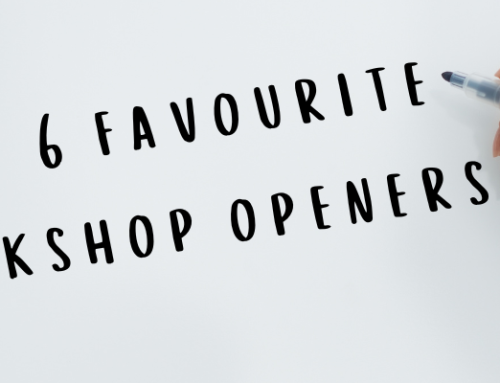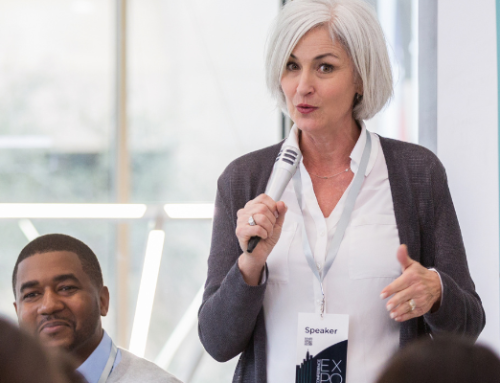Business Moderation: Facilities and Materials – Tips for Successful Workshop Design
2 weeks ago we have thought about the methods which you can use during your workshops. In some of the following posts I will give you some possible detailed methods as an example, as promised. Before that, though, we must deal with a few open questions about moderation design.
The last two questions relate to the parameters of your workshop, but are no less relevant:
7. „What kind of facilities are available to me?
What materials do I neet?“
If possible, you should adapt the facilities to the objectives and the course of your workshops and not vice versa. The facilities have a significant impact on the quality of the work result, it is therefore important to ensure a pleasant atmosphere – select a bright and quiet room, which can be easily aired and has the right temperature. It should also be not too large and not too small.
The ideal setting for small groups is the chair circle or U form. Tables act like barriers between your participants, so make sure you avoid them as much as possible.
In addition, you have to observe that there is a good traffic connection when choosing a location. As already mentioned in the post about the specific time frame, perhaps some of your participants have to travel longer to and from – you should also take this into account when choosing your venue.
For in-house workshops a change of location is recommended, in particular if the atmosphere is tense. Rooms not only anchor knowledge, but also feelings.
With regard to the materials, you need to have flip charts and if possible pin boards as well (lined with paper on both sides would be optimal – that way you simply have more space for your mental outpourings 🙂 ).
The paper usually has a matt and a slightly shimmering side and should always be put with the matt side up on the pin boards, otherwise this will lead to reflections when shooting pictures.
In addition to the flip charts and pin boards you need bevelled pens (so your writing will be thicker and more readable), moderation cards, as needed adhesive points, (coloured) cards, etc. – here the use of a moderation briefcase, which includes all the necessary utensils, is recommended.
Not to forget a camera to retain everything what you, in the course of the workshop, write down with your participants, visually. After the end of your workshop you can choose from the photos and put them in a flip chart protocol for the participants.
Where moderation design is concerned, we officially have reached the end with this post. You should now have the necessary tools, in order to sufficiently prepare yourself for your workshop.
What did you think about the series on moderation design? Do you think something was missing? I am curious about your opinion and I am looking forward to your comments and your feedback! If you need any further help with moderation designs, please feel free to check the moderation trainings and coachings I offer!
Next times I will present particularities of project meetings and then – as promised – I will present several methods with examples to choose from for your moderation!
Kind regards and good luck with your moderation design!
Birgit







Leave A Comment